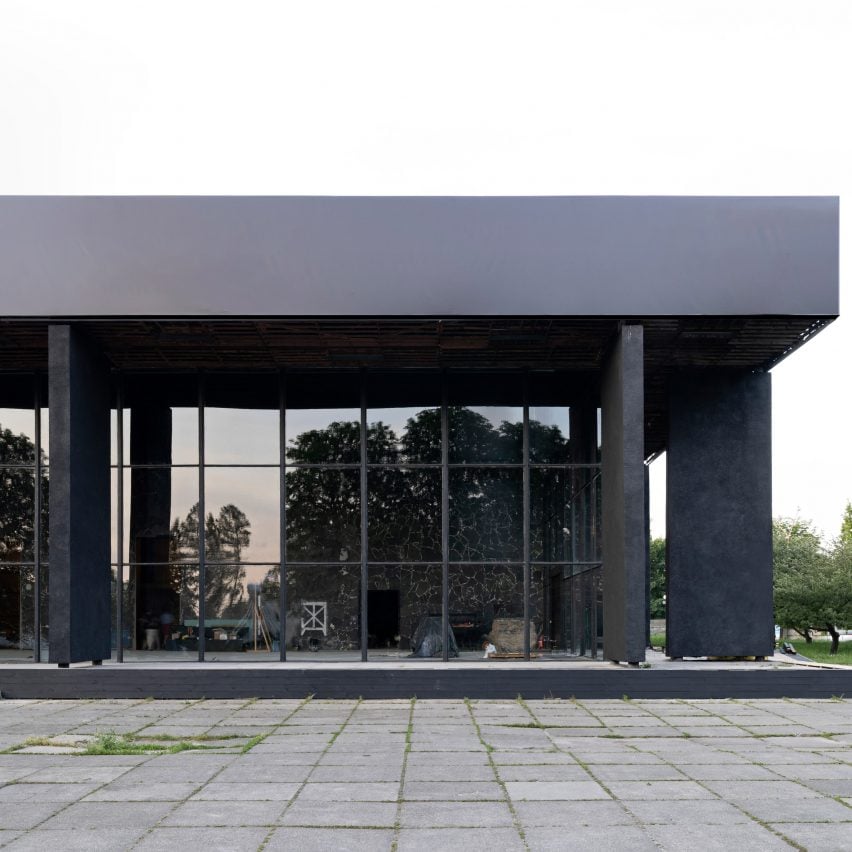
Ukrainian architecture studio Forma has renovated Pavilion 13, a Soviet-era exhibition hall in Kyiv, carefully updating its modernist structure for contemporary use.
Situated within the National Complex Expocentre of Ukraine, the building’s renovation was commissioned by non-profit Ribbon International to reinstate the hall as a public events space.
Pavilion 13 was originally built in 1967 as an exposition hall to showcase developments in the coal mining industry. By the early 2000s, however, it had lost its original function and stood unused for decades.
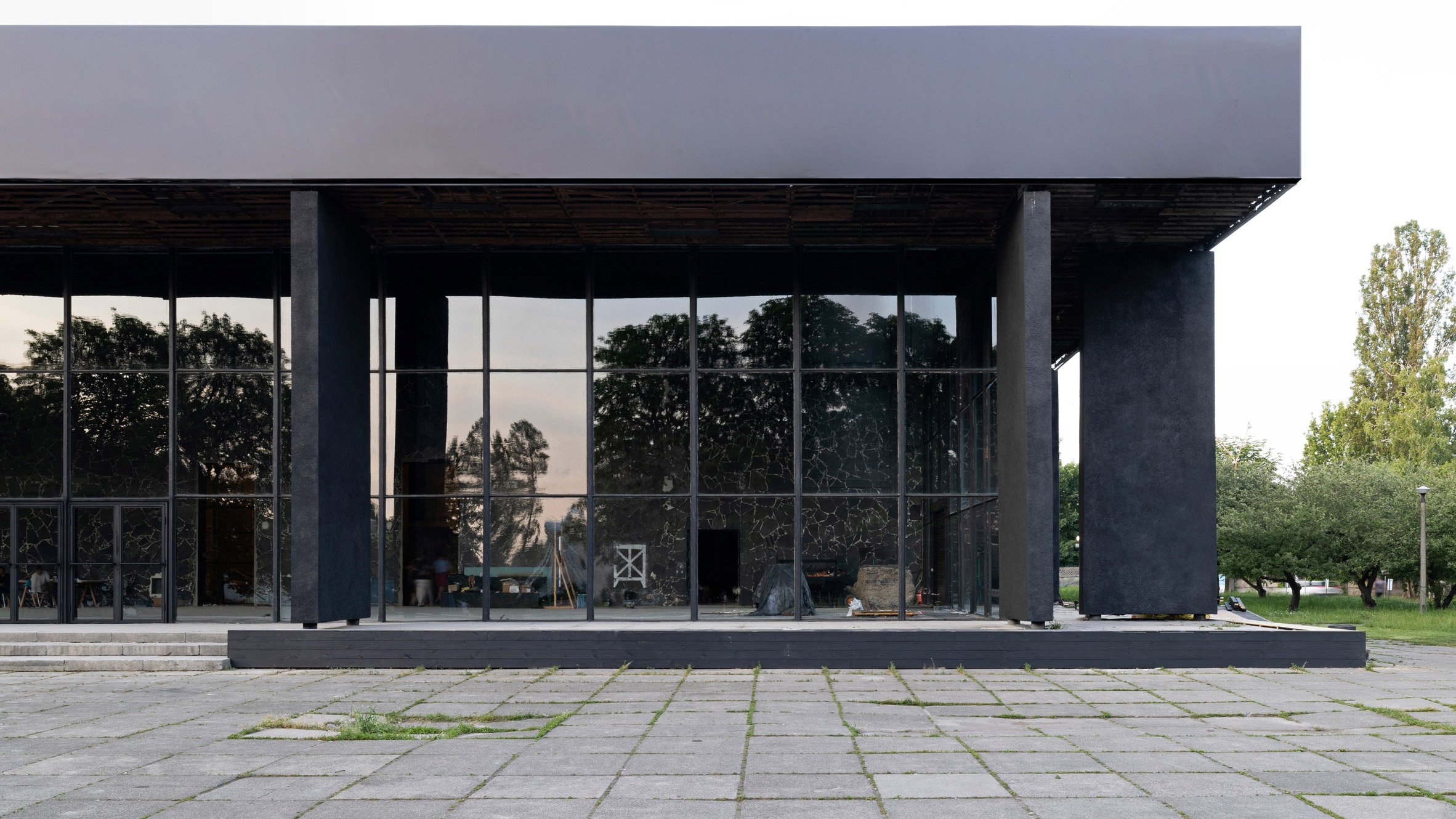
Following the establishment of the Pavilion of Culture – a public arts programme – on the site in 2020, Forma (ФОРМА) set out with a goal to revive Pavilion 13 as a usable space for exhibitions and cultural events.
The renovation serves as a precedent for the careful preservation of Soviet-era infrastructure, the studio says.
“We see our experience as a case study in how to engage with modernist architectural heritage without erasing its character or forcing it into a new mold,” studio partners Iryna Miroshnykova and Oleksii Petrov told Dezeen.
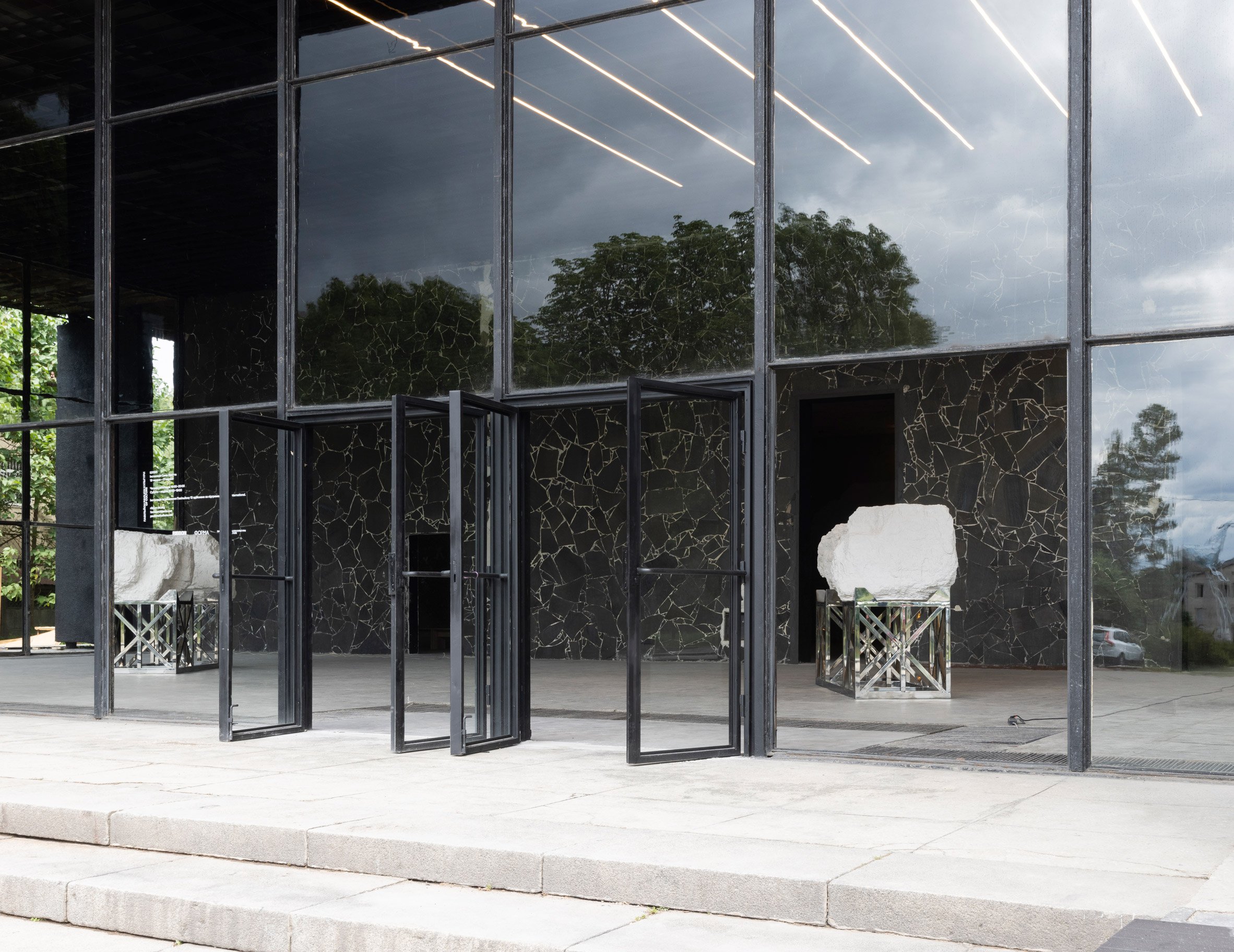
“It doesn’t necessarily require massive investment,” they continued. “It does, however, require a thoughtful, ethical approach to heritage, long-term care, and collaborative involvement.”
“Many similar structures today remain empty or fall into disrepair – often because their cultural value goes unrecognised.”
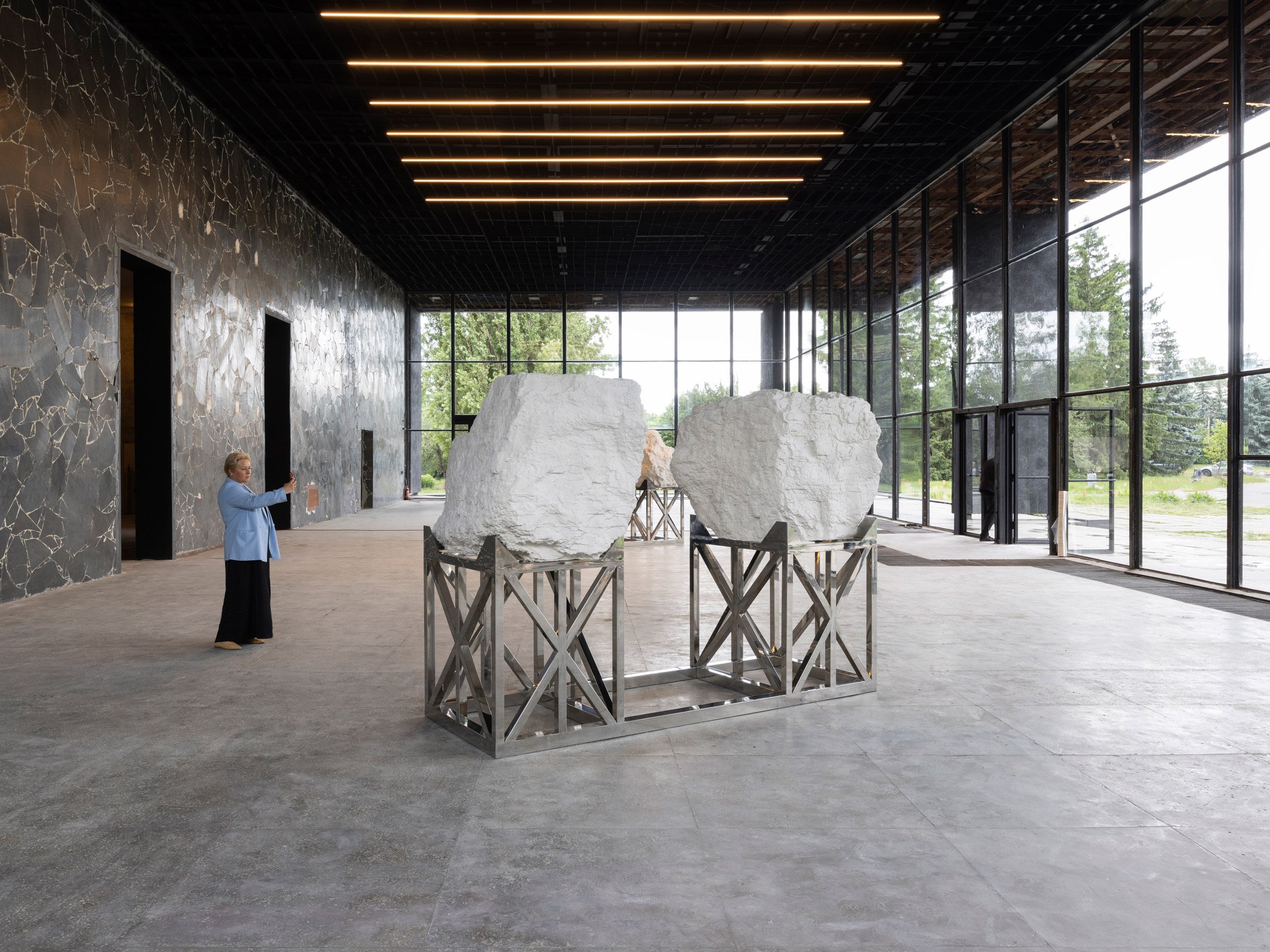
The building’s original structure, which was largely preserved by the studio, is defined by a stripped-back, rectilinear form framed by large columns and a glazed facade.
Externally, a plinth base forms a stepped access to the hall’s front, where its facades have been repaired and the doors redesigned to resemble the originals.
Beyond its steel-framed glazing, the centre opens up to a spacious main hall, which is currently showcasing a “site-responsive” exhibition by Berlin-based artist Sam Lewitt exploring “the contemporary relevance of Pavilion 13 as a former showcase for coal mining in Ukraine”.
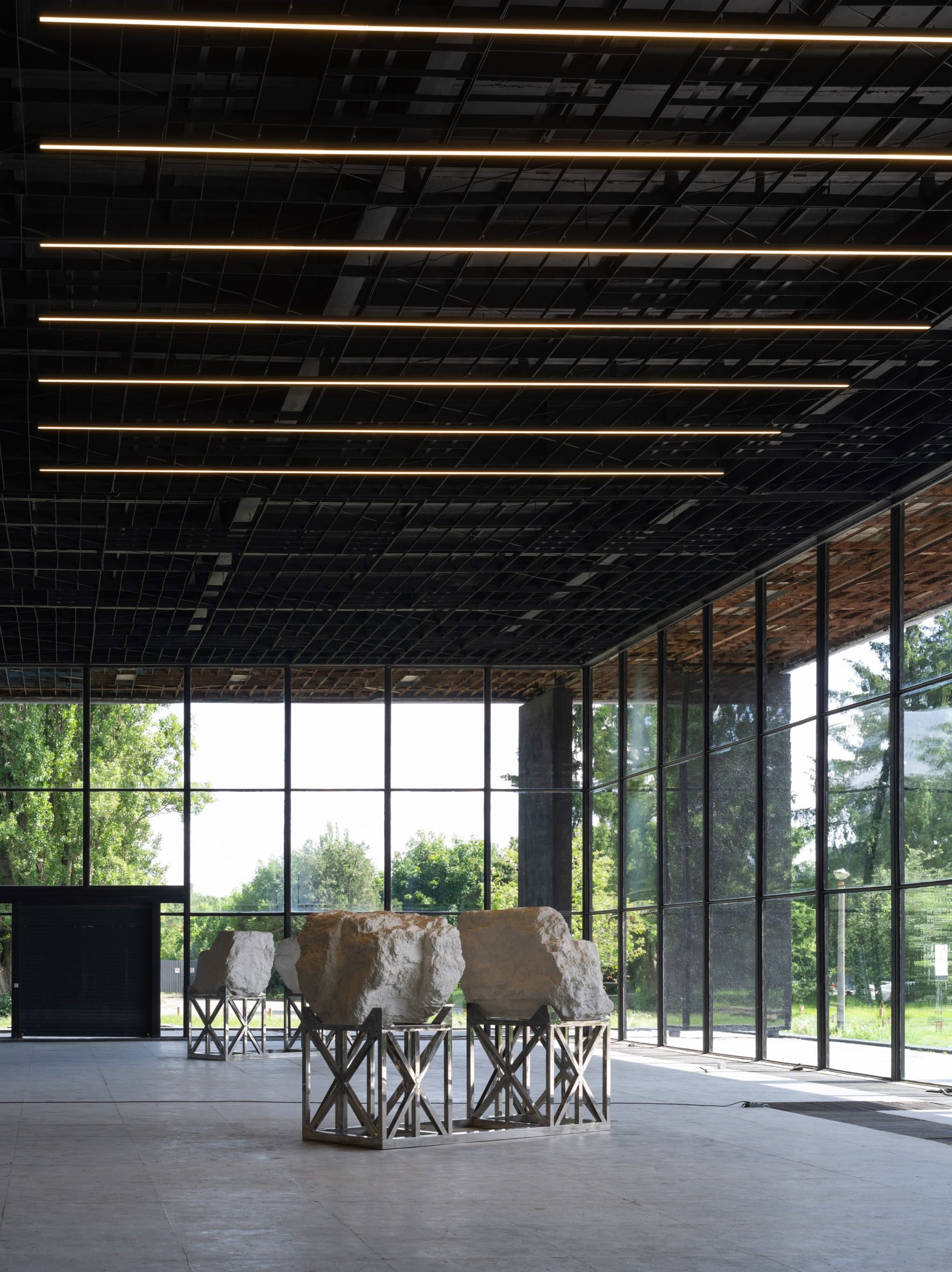
Inside, the hall’s rear wall, which had been covered by past interventions, has been uncovered to reveal a textured cladding made from shards of broken glass.
Complementing this is the installation of new concrete flooring and a steel-gridded ceiling fitted with strip lighting.
Forma’s intervention also included the updating of Pavilion 13’s water and sewage systems, electrical wiring and lighting system.
“We approached the renovation with a light, careful touch. The original architectural structure of the pavilion has been preserved — there were no additions, extensions, or removal of key elements,” Miroshnykova and Petrov explained.
“All interventions focused on restoration, not reconstruction,” they added.
Behind the main hall, the building is centred by a large cylindrical core, around which a corkscrew ramp leads down below ground.
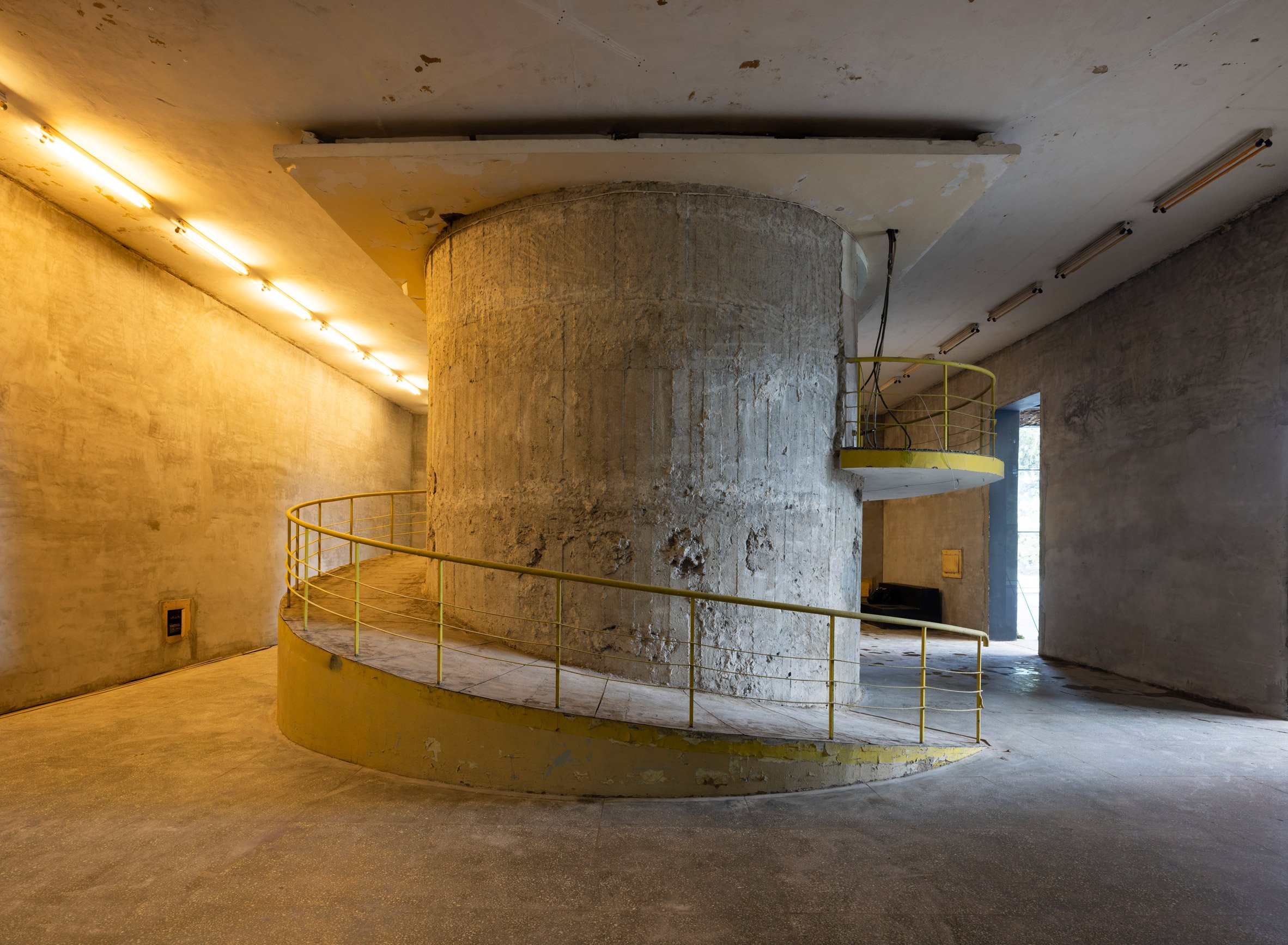
Here, a scale model of a coal mine that serves as an immersive installation for visitors remains from the original design. Other rooms have been updated for use as additional exhibition space.
According to the studio, the renovation is an ongoing project designed to adapt to changing circumstances, especially in the context of Russia’s invasion of Ukraine.
“This work is taking place in the context of Russia’s full-scale invasion of Ukraine, which has affected all aspects of public and cultural life,” Miroshnykova and Petrov said.
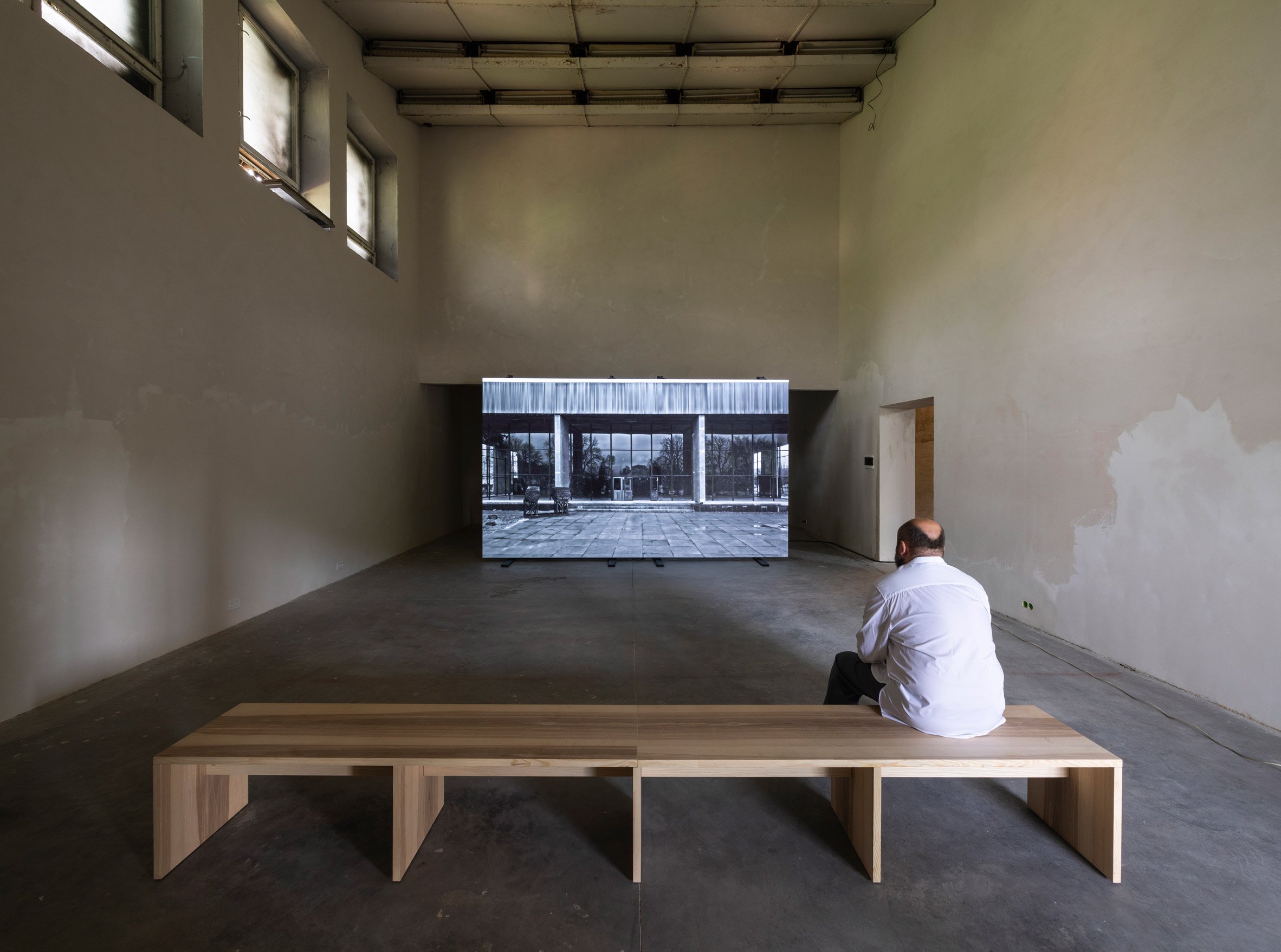
“Continuing to develop and care for the space under these conditions is not always easy, but we see value in maintaining this kind of long-term cultural infrastructure – even, and especially, in times of uncertainty,” the duo added.
“We’re committed to keeping the pavilion responsive and adaptable, more than aiming for a fixed final version.”
Other Ukrainian projects recently featured on Dezeen include a restaurant near Bukovel that features mycelium curtains and a sex shop designed with an “approachable” interior in Kyiv.
The photography is by Vitalii Halanzha.
The post Forma revives Soviet-era exhibition hall in Kyiv “without erasing its character” appeared first on Dezeen.